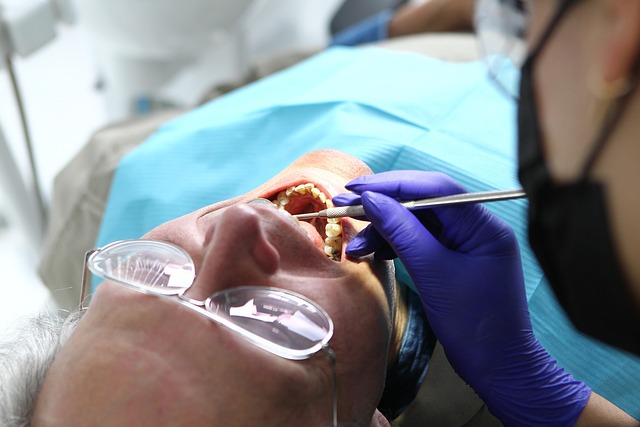Surgical wart removal costs in the UK range from £50 to £300 per session, with private services higher. Location and surgeon experience significantly impact prices; urban areas and skilled practitioners charge more. Non-surgical alternatives offer shorter recovery times and lower costs compared to traditional methods. Insurance coverage varies; pre-authorization is needed for cost management.
Considering surgical wart removal? Understanding costs is crucial. This guide breaks down the factors influencing prices, from surgeon experience and location to the actual surgical wart removal procedure. We explore non-surgical alternatives, too, as they offer a cost-effective, often less invasive option. Additionally, we delve into insurance coverage, helping you navigate financial aspects of this common skin concern.
- Surgical Wart Removal Procedure Costs: An Overview
- Factoring in Surgeon Experience and Location
- Non-Surgical Options: A Cost-Effective Alternative
- Insurance Coverage for Wart Removal Surgery
Surgical Wart Removal Procedure Costs: An Overview

Surgical wart removal is a medical procedure that involves the physical excision of warts from the skin. The cost of this procedure can vary significantly depending on several factors, including the location of the wart(s), the size and number of warts to be removed, and the expertise of the healthcare provider performing the operation. In the UK, private wart removal services in areas like Rotherham can range from £100 to £300 per session, with additional costs for follow-up treatments if necessary.
On average, the price for surgical wart removal across the country, including areas like Chelmsford in Essex, typically falls between £50 and £200 per session. This procedure is usually carried out by dermatologists or qualified nurses in specialist clinics or private practices. It’s important to note that insurance plans generally do not cover cosmetic procedures like wart removal, so individuals seeking this treatment should prepare for out-of-pocket expenses. When considering surgical wart removal, it’s advisable to consult with healthcare providers to understand the specific costs associated with their services and to choose a treatment plan that aligns with your budget and expectations.
Factoring in Surgeon Experience and Location

When comparing the costs of a surgical wart removal procedure, one key factor is the experience and location of the surgeon. The level of expertise can significantly impact the overall price, as more experienced practitioners often command higher rates due to their specialized skills. For instance, a qualified dermatologist in a major city like Cheltenham or Canterbury might charge more for the procedure than a general practitioner in a smaller town, simply because they have honed their craft over time and can offer advanced techniques.
Consider that surgical wart removal, when performed by an experienced professional, usually involves precise incisions, numbing techniques, and proper aftercare, all of which contribute to a higher cost. Additionally, location plays a role; urban areas often have higher overhead costs for clinics and hospitals, which might be reflected in the prices charged for wart removal services.
Non-Surgical Options: A Cost-Effective Alternative

Non-Surgical options for wart removal have gained significant popularity as an accessible and cost-effective alternative to traditional surgical procedures. These methods involve less invasive techniques, often utilizing topical treatments or cryotherapy (freezing), which are readily available and administered by dermatologists or specialized clinics. For those seeking a private wart removal Bradford or looking into wart removal Sheffield services, this approach can be particularly appealing due to its convenience and lower associated costs.
Compared to surgical procedures, non-surgical methods tend to have shorter recovery times and may offer better value for money. While the initial outlay for these treatments might be slightly higher than over-the-counter solutions, the overall expense is often comparable or even lower than a single surgical session at a Manchester wart clinic. This makes non-surgical options an attractive choice for anyone considering wart removal, ensuring both effectiveness and financial prudence.
Insurance Coverage for Wart Removal Surgery

When considering surgical wart removal as a treatment option, understanding insurance coverage is essential. Many health insurance plans in Gloucester, Essex, and Southend-on-Sea do provide coverage for this procedure, but policies can vary greatly. Some plans may fully cover the cost of surgery, while others might reimburse a portion, leaving the patient responsible for the remainder. It’s crucial to check with both your insurer and healthcare provider to confirm what is covered under your specific plan.
Wart removal procedures, whether performed by a private clinic in Essex or a specialized wart clinic in Rotherham, are often seen as routine treatments. However, insurance companies may have different guidelines and approvals for these surgeries. Some plans might require pre-authorization or a referral from a primary care physician before approving coverage for surgical wart removal. Understanding these processes and ensuring your healthcare provider is familiar with your insurance is key to navigating the costs effectively.
When comparing the costs of surgical wart removal, it’s clear that the procedure varies based on location, surgeon experience, and whether you opt for a traditional or non-surgical approach. Understanding these factors empowers individuals to make informed decisions about their treatment. While surgical removal may be more expensive upfront, exploring insurance coverage and considering cost-effective alternatives like non-surgical methods can significantly reduce expenses. Ultimately, choosing the right method aligns with both your budget and desired outcomes.
